CAA News Today
CAA Staff Spotlight: Mira Friedlaender
posted by CAA — March 10, 2023
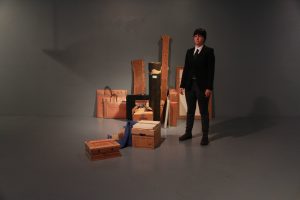
On Guard, performance centering on the installation of long-stored objects from the Bilge Civelekoglu Friedlaender Estate, FiveMyles, Brooklyn, 2014.
Mira Friedlaender is CAA’s Senior Manager of Annual Conference and Programs. Since joining CAA in 2018, Mira has worked with a significant portion of members (new and returning!) and continues to do so each year to support their participation in conference sessions and events. She produces the event with CAA staff, committees, and partners, attending to myriad details while also working to refine and reshape the conference each year in support of CAA’s long-term strategic goals. Mira was previously an exhibition manager for nonprofits such as No Longer Empty and HappyLuckyNo1. She also worked in television production and co-owned a restaurant in Brooklyn, New York.
As an artist and independent scholar of art stewardship, Mira has exhibited locally and internationally, and her work has been featured in the New York Times and Bomb. She has held residencies at the American Center in Bangladesh and Recess in New York. She is the Director of the Bilge Friedlaender Estate, was a fellow in the Art & Law Program, and cocurated Bilge Friedlaender: Words, Numbers, Lines in Istanbul.
“Since her death, I’ve been stewarding the art my mother Bilge Friedlaender (née Civelekoglu) made, beginning more actively in 2014 with my project at Recess, which was still in Soho at that time. I’ve contributed to the scholarship on artist estates through this work and through knowledge sharing; as an artist and artist’s heir I am most interested in performing an emotional institutional critique of the challenges artist-stewards face, particularly those without infinite resources,” explains Mira.
Curated by Işın Önol, Bilge Friedlaender’s never-before-seen works from the 1970s are on view now at Sapar Contemporary in New York City through April 10. Bilge’s work occupies a unique place in the Turkish and Middle Eastern modernist tradition as well as in the history of twentieth-century American art, especially the soulful minimalism of 1970s—not unlike the work of Zarina Hashmi, Etel Adnan, and Huguette Caland. Bilgé’s minimalism is infused with Sufi mysticism, sacred numerology, and reverence for nature and the divine feminine. Her spiritual feminism evolved into an overt ecofeminism as she grew older.
“My mother left Turkey in 1958 to come to the US and be an artist, and she exhibited until her death. Since 2015 there has been a museum show of her work in Istanbul and there have been subsequent opportunities for Bilge’s work, but this is the first time her work has been shown in New York City since 1981. This is a big step for the estate. Next, we are looking to travel this incredible selection of the works on paper and artist books with the goal of expanding the scholarship around Bilge’s artworks and extensive writings.”
Join Mira and curator Işın Önol in conversation with guests on April 4, 6 p.m. ET, at Sapar Contemporary.
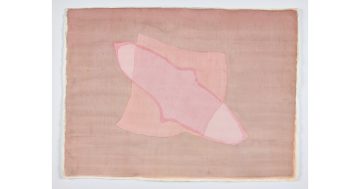
Bilge Friedlaender, Weightless Pink, 1975
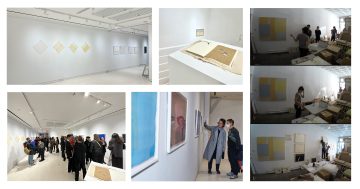
Bilgé: Lifespan of a Horizontal Line, Sapar Contemporary, 2023, and, right column, Half of What’s There, Recess Art, 2014
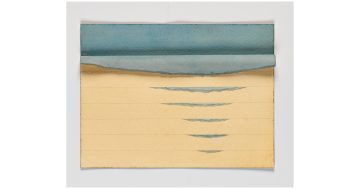
Bilge Friedlaender, Tides Time II, 1975
CAA Intern Spotlight
posted by CAA — February 10, 2022
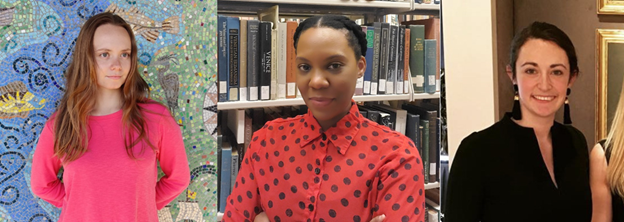
This week, CAA spotlights its three amazing interns who have been working with CAA since early fall 2021: Development Intern, Viktoriya Molchanova, Editorial Intern, Keshawna Mooney, and Grants Administration Intern, Astrid Tvetenstand. Learning to work remotely for an organization as a young professional is no small feat and we thank them for their dedication, enthusiasm, and support.
Development Intern: Viktoriya Molchanova
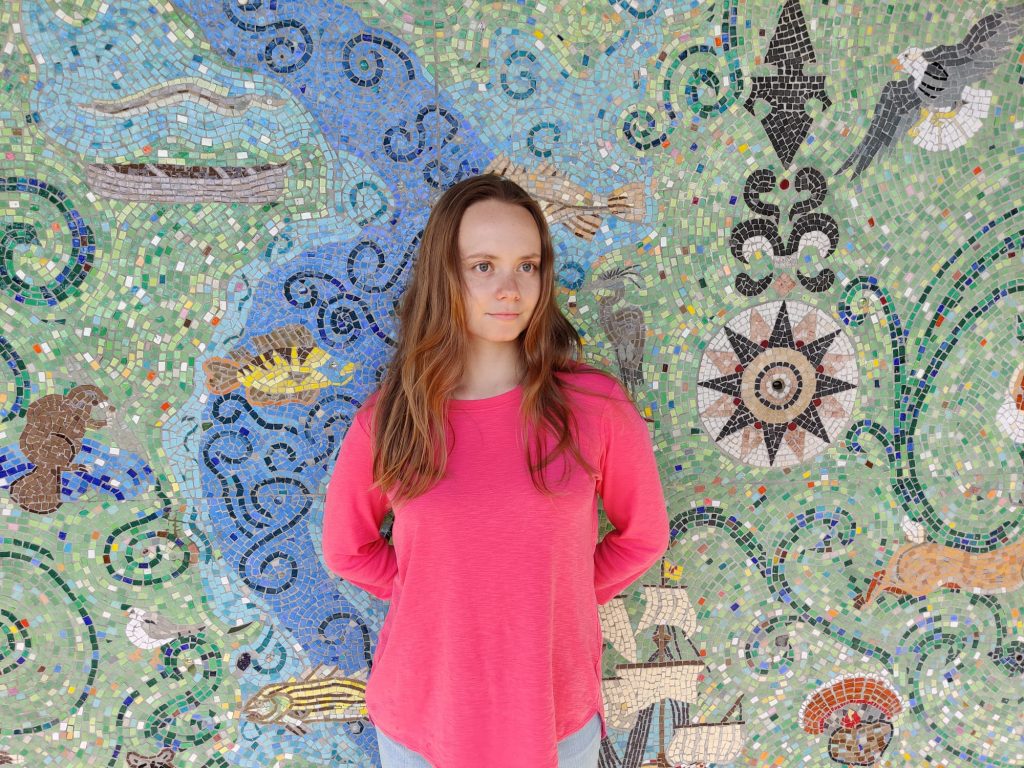
How has your experience at CAA affected you?
As a flutist with a performing arts background, I did not know much about the visual arts. As an aspiring future arts administrator, I wanted to take an internship at CAA to expand my knowledge and work experience specifically in the visual arts. Throughout these months, I have gained a deeper understanding of the visual arts world from its accomplished scholars to its dedicated funders. My great-grandfather was a visual arts scholar and attended many international visual arts conferences. I am happy to continue his legacy through my internship at CAA.
What is your favorite kind of art and why?
My favorite art is The Unicorn Rests in a Garden from the Unicorn Tapestries at the Met. The tapestry reminds me of a time when I arrived in elementary school as a first generation immigrant. It was challenging to learn the English language and assimilate into a new culture. However, the arts education at my school helped me overcome my struggles. My visual arts teacher saw that I enjoyed looking through his art book on unicorns. As a kind gesture, he gave me the book as a gift. After all these years, I still keep book as a reminder of the transformative power of arts education on my life and career.
Viktoriya Molchanova is a graduate student in the Arts Administration Master’s program at Baruch College and holds two Bachelor’s in Arts Management and Classical Instrumental Performance from Purchase College. She won the Nagelberg Family Scholarship in Arts Administration in 2021 and the SAMMIE Award for Outstanding Achievement in Arts Management in 2020. Viktoriya is in her last semester at Baruch College and is writing her Master’s thesis. Viktoriya is happy to connect on LinkedIn.
Editorial Intern: Keshawna Mooney
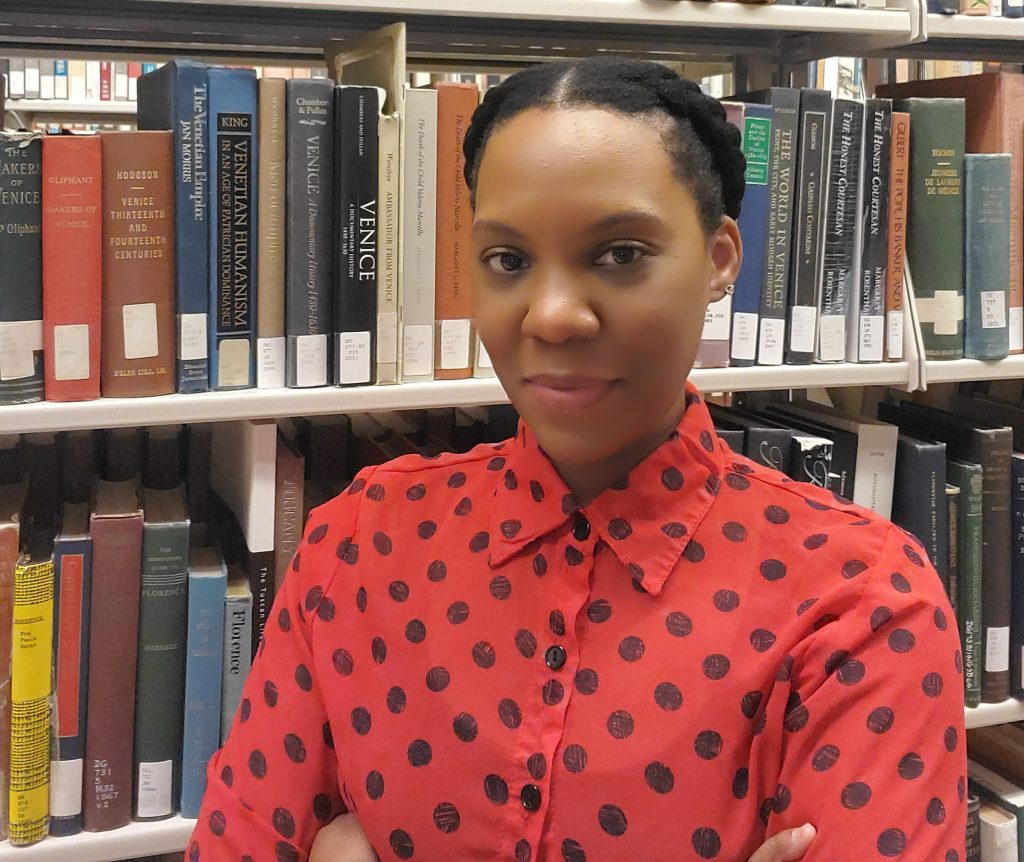
How has your experience at CAA affected you?
My internship at CAA has been an amazing experience. I have learned so much about the publishing process and become more familiar with specific style guides which were both specific goals I had for myself. It has been great to work with such an encouraging supervisor that has allowed me to advance these skills and grow as a young professional. I am also proud to have been part of the team that assists artists, scholars, and other art lovers in presenting their work and ideas to an audience.
What was something you learned that was unexpected?
I have been amazed to learn the amount of work that goes into journal publishing. Being able to work on all journals simultaneously has been exciting and learning to prioritize while juggling multiple projects has helped strengthen my time management skills even further. I have also discovered that the editing process is a much more collaborative experience as opposed to solitary, and it feels great to know that I have support and guidance when I need it.
What is your favorite kind of art and why?
While I love all forms of art, my favorite kind of visual art would be street art because you can find it almost anywhere and sometimes in the most unexpected places. In addition to its accessibility, street art takes concepts many of us recognize and positions them in ways so relatable that tells us we are seen and maybe even understood. Some of my favorite street artists include DAZE, Bambi, and WRDSMTH.
Keshawna Mooney is an Editorial Intern at CAA. She is a junior at CUNY Brooklyn College majoring in English and Creative Writing. Her goal is to present multilayered characters in their most complicated, contradictory, and raw forms. She is also a winner of the 2021 James Tolan Award for her essay “Lolita: The Unknowingly Irresponsible Girl Child.” She has worked as a supplemental instructor at BMCC working with students to develop and improve their writing skills and as an English literacy volunteer with adult populations. After graduation she hopes to be able to continue doing the work she loves, telling interesting stories and helping others tell theirs. In her spare time, you can find her wandering around art museums, enjoying theater, or curled up with a good book.
Grants Administration Intern: Astrid Tvetenstrand
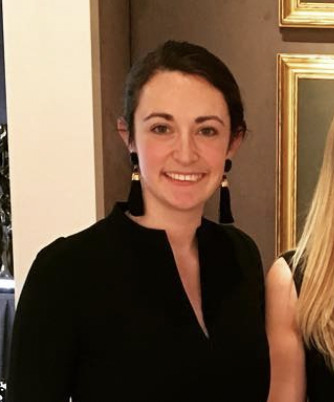
How has your experience at CAA affected you?
Working at CAA has exposed me to the larger community of art historians outside my discipline. Everyone at CAA is building a productive network of professionals, scholars, emerging leaders in the field who are building each other up and sharing resources. I have learned so much about how grants and awards are administered to simultaneously give people more opportunities for their work.
What was something you learned that was unexpected?
I learned that juries make hard decisions and are ultimately trying to celebrate and grant as many projects as possible. Before working at CAA, I had only ever experienced the application process and had not given too much thought to what happens after you click the submit button. Listening to the juries’ debate was illuminating and FUN. The process is complex, intellectual, and ultimately much more nuanced than I previously thought.
What is your favorite kind of art and why?
I love nineteenth-century American landscape painting because it is beautiful, complicated, and speaks to so many important themes and topics within our shared history.
Astrid Tvetenstrand is a fourth year PhD candidate in the American & New England Studies program at Boston University. She studies the history of American painting, decorative arts, and architecture. She explores these fields through practices of collection, economic development, and the consumption of American property. Her dissertation examines late nineteenth-century American landscape painting’s role in the creation of seasonal colonies. By investigating art’s relationship to the development of property, she analyzes the socioeconomic framework which shaped both the visual content and physical market of landscape painting. She looks at the role of nature in the lives of nineteenth-century Americans and how it influenced the creation of art and commerce in the United States.
CAA Welcomes Amy Raffel as Head of Content
posted by Allison Walters — February 26, 2021
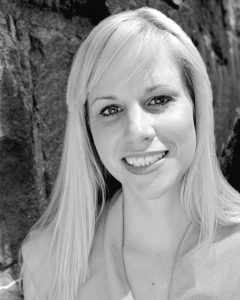
Amy Raffel
We are pleased to announce that Amy Raffel will be joining CAA as Head of Content. This newly created role is responsible for leading the development of a unifying digital-first content strategy for CAA and digital platforms. The role will define the overarching content mission, vision, and voice for CAA and ensure that the content strategy aligns with CAA membership needs. She will oversee CAA’s content and programs, intellectual property, professional training and skills, digital archiving, and publications. She will begin on March 1.
Amy Raffel has broad expertise in art history with a PhD degree from the CUNY Graduate Center and a Master’s degree from the Institute of Fine Arts (NYU). Her research focuses on 1980s downtown New York City, with a concentration on Keith Haring. She recently published her first academic book, Art and Merchandise in Keith Haring’s Pop Shop, as an independent scholar with Routledge. Prior to CAA, Raffel worked at the Queens Museum, developing and leading interpretation initiatives to increase audience engagement. She produced digital content, including audio guides, art talks, and tours, and created onsite resources, including visitor guides, didactics, and a number of interactive spaces – all based on audience research and assessment. She has also written and edited for several educational and art-related digital platforms, and taught art history to undergraduates at Lehman College.
CAA Announces Isimeme Omogbai as Executive Director and CEO
posted by CAA — March 30, 2020
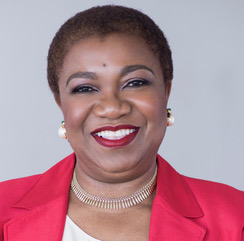
Isimeme Omogbai.
CAA is pleased to announce Isimeme (Meme) Omogbai as its next executive director in an executive search process guided by Arts Consulting Group. Omogbai succeeds David Raizman, who has served as CAA’s interim executive director since July 2019. Omogbai begins at CAA on March 30, 2020.
“It is a pleasure to welcome Meme Omogbai to CAA as Executive Director,” says Jim Hopfensperger, President of CAA. “The Search Committee conveyed its confidence that Meme will apply her unique administrative experiences, striking energy, and clear vision to the important work ahead at this key moment in the Association’s history.”
As executive director, Omogbai is an employee of the CAA Board of Directors and serves as the Association’s chief executive officer. In this role, she will work with board members, committees, and task forces to develop the Association’s strategic plans. Omogbai’s experience in resource management and the museum world will greatly benefit the membership and the larger visual arts, design, education, and cultural communities with whom CAA works. Omogbai will oversee a wide variety of initiatives, including the CAA Annual Conference, an advocacy program, member services activities, the career center, fellowships, grants and opportunities offered by CAA, and the publications program, which includes The Art Bulletin, Art Journal, Art Journal Open, and caa.reviews.
“I am joining CAA at an unprecedented period in world history as people across the globe are trying to understand what COVID-19 means for their families, communities and organizations. As I embark on this new role, I want to emphasize that maintaining the health, well-being, and safety of our staff, membership, and stakeholders is and will always be a top priority,” says Omogbai. “We have seen examples of the indomitable human spirit overcome adversity. Art inspired by challenging experiences is a common thread for many of the world’s most distinguished creative minds. Now more than ever there is a need to provide access to robust edifying visual arts experiences that are inclusive of diverse practices and practitioners for every adult and child, professional and student, nationality and race across the globe. Together we can achieve these objectives. With CAA as the preeminent international leadership organization in the visual arts, promoting these arts and their understanding, we will have the opportunity to perform an invaluable service to humanity.”
Before joining CAA, Omogbai served as a member and past Board Chair of the New Jersey Historic Trust, one of four landmark entities dedicated to preservation of the state’s historic and cultural heritage and Montclair State University’s Advisory Board. Named one of 25 Influential Black Women in Business by The Network Journal, Omogbai arrives with over 25 years of diversified experience in corporate, government, higher education, and museum sectors.
As the first American of African descent to chair the American Alliance of Museums, Omogbai led an initiative to rebrand the AAM as a global, inclusive alliance. While COO and Trustee, she spearheaded a major transformation in operating performance at the Newark Museum and achieved four consecutive years of 4-star ratings for superior management. During her time as Deputy Assistant Chancellor of New Jersey’s Department of Higher Education, Omogbai received Legislative acknowledgement and was recognized with the New Jersey Meritorious Service Award for her work on college affordability initiatives for New Jersey families.
Omogbai received her MBA in Finance & Management Consultancy from Rutgers University and holds a CPA. She did post-graduate work at Harvard University’s Executive Management Program and has earned the designation of Chartered Global Management Accountant. She studied global museum executive leadership at the J. Paul Getty Trust Museum Leadership Institute, where she also served on the faculty.
CAA Announces David Raizman as Interim Executive Director
posted by CAA — May 20, 2019

Photo by Michael Froio
On Sunday, May 5, the Board of Directors of CAA voted to appoint David Raizman as the Interim Executive Director of the organization. David has served as Treasurer of CAA since October 2018 and has held a number of administrative and faculty roles in higher education over a long career.
David’s term will begin July 1, 2019, at the close of the term of Hunter O’Hanian, the current Executive Director.
“I’ve been a member of CAA since 1992 and have attended and participated in CAA Annual Conferences since the early 1980s. CAA’s many programs and publications have contributed much to my development as a scholar and teacher. As a board member I’ve enjoyed seeing how CAA serves its broader membership to meet needs and challenges in academe and the arts,” said David Raizman.
“As interim Executive Director I look forward to learning more about the organization and the staff and facilitating the good work they do. I also look forward to continuing the work of Hunter O’Hanian, who created an environment of diversity and inclusion and shifted the direction of CAA toward these important ideas.”
David’s term as Interim Executive Director will span from July 1, 2019 through the appointment of a new Executive Director. The Executive Director search is currently underway, with the board of directors interviewing placement firms. The goal is to have a new executive director to lead CAA by the end of 2019.
“The Board of Directors is pleased that an experienced administrator and accomplished academic with David Raizman’s qualifications will lead CAA through this transition,” said Jim Hopfensperger, President of the CAA Board of Directors. “We have full confidence David is the right person to advance CAA’s strengths as a learned society and a professional association, while positioning the organization for long-term success under the next Executive Director.”
David Raizman biography
David Raizman is Distinguished University Professor Emeritus of Art & Art History in the Westphal College of Media Arts & Design at Drexel University in Philadelphia, Pennsylvania. He is the author of History of Modern Design (London, Laurence King and New Jersey, Pearson, 2nd edition 2010) as well as several articles and reviews on design history, including subjects ranging from American furniture to the history of world’s fairs. He earned his PhD at the University of Pittsburgh under John Williams and earlier in his career published articles and reviews on the medieval art of Spain. Prior to being appointed CAA Treasurer he was Treasurer of the International Center of Medieval Art (ICMA) and a member of its Finance Committee. During his academic career Dr. Raizman served in several administrative roles, as department head, associate dean, and interim dean in the Westphal College of Media Arts & Design, and his College’s representative to the National Association of Schools of Art & Design (NASAD).
During the summer 2015 he directed a four-week NEH-funded summer institute entitled “Teaching the History of Modern Design: The Canon and Beyond” at Drexel University. He was a guest lecturer at Tsinghua University in Beijing in 2014, and a fellow and guest lecturer at the Wolfsonian/FIU Museum in Miami Beach, Florida (2009; 2010). He is the co-editor of two books, with (current CAA board member) Carma Gorman, of Objects, Audiences, and Literature: Alternative Narratives in the History of Design
(Cambridge Scholars Publishing, 2007), and most recently, with Ethan Robey, of Expanding Nationalisms at World’s Fairs: Identity, Diversity and Exchange, 1851-1915 (Routledge, 2017). His latest book, Reading Graphic Design: Image, Text, Context is scheduled for publication with Bloomsbury in 2019.
CAA Announces Departure of Executive Director Hunter O’Hanian at End of Contract
posted by CAA — March 19, 2019
College Art Association Board President Jim Hopfensperger and Executive Director/CEO Hunter O’Hanian announced last Friday to staff and internal constituents that O’Hanian will be leaving CAA upon conclusion of his current three-year contract in June.
During his time as executive director, O’Hanian oversaw numerous organizational changes including a successful rebranding, a streamlining of membership structures, and improvements to staffing and financial reporting. In addition, he supervised significant changes to programs including increases to the number of CAA Annual Conference sessions and awards, renewed engagement with CAA Affiliated Societies, a new contract with CAA’s co-publisher (Routledge, Taylor & Francis), and plans for launching year-round programs.
“Hunter has led CAA with great intelligence, empathy, energy, and passion, and the association has enjoyed many successes these past three years,” said Hopfensperger. “In particular, the board of directors is grateful for his commitment to diversity and inclusion, and his efforts to better position CAA for success as both a learned society and a professional association.”
“For me, it’s been an exciting and fulfilling experience,” said O’Hanian. “I have enjoyed meeting and working with the members, staff and board, while strengthening our programs. Making change is never easy, especially for an association with an 107-year history. But I could not be prouder of the staff at CAA, the board of directors, the committees and editorial boards, and the members of this organization for their work ethic and feedback. I believe we have made a stronger association.”
As O’Hanian concludes his service, the board of directors will begin a search for its next executive director this spring with the hopes of bringing on a new leader by year’s end. In addition, an announcement concerning plans for interim leadership through the transition will be forthcoming.
Meet Cali Buckley, CAA’s New Grants and Special Programs Manager
posted by CAA — March 14, 2019
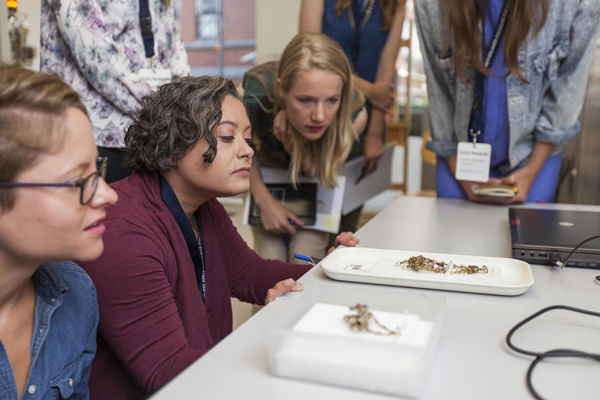
Cali Buckley takes part in the Rijksmuseum’s Museum Objects as Evidence: Approaches to the Material World Summer School, 2018. Photo: Thijs Gerbrandy
We’re delighted to introduce Cali Buckley, CAA’s new Grants and Special Programs Manager and RAAMP Coordinator, who began her full-time role in January after working part-time as the CAA Programs Assistant in 2017. She received her PhD from Penn State University on interactive anatomical models and their creation by craftsmen in the early modern era. Joelle Te Paske, CAA Media and Content Manager, spoke with her in late January to learn more about her research and her hopes for the Resources for Academic Art Museum Professionals (RAAMP) program, which provides publicly accessible resources to academic museum professionals.
Joelle Te Paske: Thanks for taking the time to chat, Cali. So to begin, where are you from?
Cali Buckley: I’m from Pottsville, Pennsylvania. It’s only about three hours from here. It’s north of Philly, best known for Yuengling beer which is the oldest brewery in America. That’s our claim to fame.
JTP: Good to know. And you worked with CAA a few years ago, correct?
CB: Yes, I moved to New York after my Fulbright and worked for CAA for six months as a programs assistant part-time while I was finishing my dissertation. Once I defended and graduated, I moved back to Germany.
I actually have long ties with CAA. Right out of college, I worked for Penn State University Press on art history books. I was able to actually attend CAA and talk to authors, and I worked at the Book and Trade Fair for about three years. It was fun. You can hear people talking about their wonderful book ideas. If I had more time, I would just sit around and see how people pitch these things because it’s fascinating.
I went to Penn State for journalism and then went into publishing right after graduating—I worked on history books and then got really into art history and thought about all the possibilities. Because I guess I had this much narrower idea of traditional art history. And then working on some of these new books really expanded my sense of what that could be.
JTP: That’s great.
CB: I knew some folks in our art history department at Penn State through the editorial board, and I started talking to them about the possibility of my doing my masters there. And I met one of my professors through an editor there. So I planned on going for my masters and then back into publishing, but I completely fell in love with it. I found some great topics, and I just kind of wanted to keep moving forward.
I started going to CAA as a graduate student, so no longer in the Book and Trade Fair. I was part of this group called The Graduate Student Association for Visual Culture. And we would apply for money from Penn State to get groups of us to go to CAA every year. So we would have this group caravan to CAA, all the art historians.
JTP: Sounds ideal.
CB: It’s wonderful. We created this Valentine’s Day tradition because CAA usually falls over Valentine’s Day. And we still get together on the 14th and watch our favorite movie and eat pizza.
JTP: Are you going to do it this year?
CB: Yes, yes, absolutely.
So I started with doing the Book and Trade Fair at CAA. Then I went as a graduate student, gave a talk at CAA in Chicago a few years back. And the same day participated in a roundtable in publishing. CAA’s been huge in my life.
JTP: I’d love to speak a bit about your research, too—early anatomical models and the control of women in medicine.
CB: Originally, when I went into publishing, I was doing weird research projects on interactive books and books as objects. And I used to give talks at Columbia to journalism students in the summer about how to create physical books and how it’s different from books online. How to work with the movement of books and do all these funny things that literary magazines were experimenting with. And then I found this sixteenth-century version of what I was talking about, in the form of an anatomical model.
These have become much more popular in the last ten years but some of these [models] had layers. So they were just images of the body with layers showing the different organs and systems. And that idea of movement and interactivity was fascinating—and a lot of them are inaccurate, even for their time, which makes them even more interesting.
There are all these different layers to audiences, whether you’re trying to highlight the accuracy, which a lot of these are not, or the visuality and the interactivity. And that seems to be more important.
Then I got into ivory models, which is a huge project of mine, creating a whole catalogue of them. That’s a big part of my dissertation.
JTP: Interesting.
CB: I found 180 in the world and I have new people emailing me every year. They’re a much bigger phenomenon than we thought and I’ve done quite a bit of research in Germany to pull these threads together and find out more about their history. I’ve been trying to bring these to light and hopefully I’ll have an article out soon.
JTP: That’s terrific. I’m curious—what is one of your favorite CAA conference memories?
CB: I think one of the great memories was actually an event connected to CAA where I was giving a talk with someone from The Art Institute of Chicago and they let us do a private showing of prints and different objects [at the museum]. Some of the prints were the actual interactive prints that I had worked on.
JTP: That’s always exciting, to be in the same room with objects you’ve studied.
Do you have a favorite exhibition you’ve seen recently?
CB: I just went to the Brueghel exhibition in Vienna and it was amazing. I mean, it was really well done and it went through both his history and paintings and a lot of his earlier drawings and sketches. But it also included a lot of the process to make the materials—some of the wooden planks and those sorts of thing that he used, and the process of painting and printing. That process stuff was really interesting. I think that should be in a lot more exhibitions.
JTP: I agree. My first job was as a registrar at a gallery and I can never quite divorce myself from “How much did the crate cost?”! Because you have a different sense of the process.
CB: Absolutely. I work a lot on materiality. I’m interested in the process of how a work was made, what it’s made of, and how the material affects it. I actually started taking a lot more art classes in different areas to get a feel for it.
I took a class in wax modeling with someone who does wax moulages and restoration. Moulages are generally medical things. So I essentially made a moulage using wax of some skin condition! That was a fun workshop. I was at the Narrenturm which is an old insane asylum in Vienna that now houses a pathological museum. And then you spend a couple of hours making these wax moulages. It was just such a bizarre and wonderful day.
JTP: That does sound bizarre and wonderful.
So, thinking forward to your work with RAAMP, what do you find the most exciting part of that resource?
CB: I’m excited to be [at CAA] and working on a diversity of projects so that I get that bigger, that broader umbrella of what’s new and exciting outside of my little area of the research world. Part of that is the RAAMP program, which really allows people in various facets of the academic and museum worlds to share experiences and have discussions about issues facing those institutions—and those who they serve—today. I love the idea of having meetings and sharing discussions online, because that way they are more accessible. Our Coffee Gatherings are like afternoon meetings at a café with a small audience that can discuss matters in a casual way, but they are also recorded now so students can always watch these later to gain insight into particular matters. The video practica are similar, but more streamlined with one person discussing a specific topic. I can’t wait to get more Coffee Gatherings together because those small group discussions can be really valuable.
JTP: How do you see of the role of academic art museums moving forward?
CB: Academic art museums are as integral as ever to education, but they are facing different issues as time goes on while also dealing with age-old dilemmas. They need to learn how to use the latest technology and how to deal with the latest controversies over artwork, but they also need to engage students. The whole idea of RAAMP is to provide resources for academic art museums to tackle these problems. Part of that is providing a network of professionals who share their expertise.
I do think that museums have to be aware of the social environment and how to contend with criticism. Our session at the 2019 conference allows us to open up this topic to see how artists and professionals deal with some very serious issues of artwork being interpreted as offensive. Artwork is inherently open to interpretation, so I think it’s important to discuss how museums act as mediators to a degree—and how their role is balanced with their place in an academic institution.
I should add that one of my favorite teaching experiences was being able to introduce first-year students to the Palmer Museum of Art at Penn State and asking them to describe the giant [Helen] Frankenthaler painting we had hanging there. There’s nothing quite like it when a student realizes that they have history right in front of them.
Staff Interview: Fernando Zelaya
posted by CAA — April 24, 2017
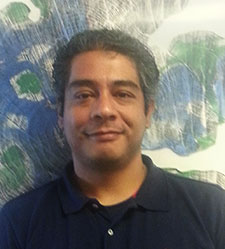 The next in a series of interviews with staff members is a conversation with Fernando Zelaya, CAA controller.
The next in a series of interviews with staff members is a conversation with Fernando Zelaya, CAA controller.
How long have you worked at CAA?
I have been at CAA since December 2012—four years, four months.
What do you do at CAA?
I am the controller, in the Finance Department.
What does CAA mean to you?
CAA to me is a medium for all art scholars to come together and be a part of a community. It’s also a place to share with each other, and to teach each other.
Can you talk about one of your favorite member moments?
Since I interact with members mostly at the conference, I’ll tell one story here and add another in the conference question later on. My favorite member moment was when I helped an elderly member who reminded me of my grandmother. She had such vigor and enthusiasm and seemed genuinely happy to be at the conference. That made my day.
What do you like best about the arts and working in the arts?
What I like best is meeting and working with artists. In my daily life and my earlier years, I had never interacted with artists. Now, having worked for the Dia Art Foundation as well as CAA, I have learned to appreciate art more than I used to, because now I better understand the meaning behind the art.
Do you have a favorite moment from the Annual Conference?
Once at registration I was berated by a flustered member who was late to a session and wanted to get his ticket quicker than was possible. The nice moment came when he returned to my booth after the session was over and gave me a sincere apology.
People interested in art can sometimes rebuff things like sports. But you’re interested in sports like soccer and baseball. Do you see a conflict?
I think that art and sports have more in common than people think. Both require years of hard work to perfect, and both need a combination of grace and power to achieve the objective of the piece (in art) or to score (in a game). It takes grace to stop a soccer ball or save a shot coming toward you at fifty to sixty miles per hour, or to hit a baseball with a bat when both objects are about three inches wide. That kind of skill, to me, is just as beautiful as a stroke of a brush or a poem that can draw a tear or bring about a smile.
You’re also interested in science fiction. Are there any new television shows or movies that have piqued your interest?
Science fiction is my favorite type of television show or movie. My favorite is Doctor Who, because of its sheer brilliance and how it has evolved over the last fifty-three years. The series even survived being off the air, only living in print and audio for almost ten years. The best new show I have seen this year is The Man in the High Castle, which takes us to a world where the Axis powers won WWII and have divided the United States among them. I am also a big fan of the Marvel and DC movies. I love these types of shows or movies because it is fun to immerse myself for a couple of hours—okay, maybe more than a couple—and go somewhere magical or even quite insane.
Staff Interview: Alyssa Pavley
posted by admin — February 10, 2017
The next in a series of interviews with staff members is a conversation with Alyssa Pavley, CAA associate editor of digital publications.
How long have you worked at CAA?
Six years.
What do you do at CAA?
I work in CAA’s Publications Department, where I started out as the editorial assistant. I am currently the associate editor for digital publications and work closely on Art Journal Open.
What does CAA mean to you?
To me, CAA is a place of creative and intellectual exchange.
Can you talk about one of your favorite member moments?
One of my favorite member moments was at last year’s conference in DC, where I had a great conversation with a member who had recently joined CAA and was attending the Annual Conference for the first time. It was fantastic to be able to speak at length with her about her experience, the sessions she had attended so far and those she was looking forward to, and her career. It’s always fun to hear from someone experiencing the Annual Conference for the first time!
What do you like best about the arts and working in the arts?
It’s wonderful to work in such a creative environment. Since I work specifically in arts publishing, it’s great to be in a space where I can help others peruse their artistic and creative passions via digital publications.
Do you have a favorite moment from the Annual Conference?
It’s great when I’m able to help a conference attendee, even if it’s something as small as giving directions to the room where their next session is taking place or looking up the time a session starts—it’s nice to think that I’ve possibly made someone’s day a little less stressful! On a personal note, I love browsing through the Book and Trade Fair.
CAA Seeks Advertising Sales Rep
posted by admin — February 02, 2017
Part-time and commission based
The College Art Association (CAA), a membership and advocacy organization for those working in the visual arts, seeks a part-time advertising sales rep with media sales experience in both print and digital platforms. The ideal candidate should have established contacts in the arts and culture publishing landscape and in the wider culture field. She/he will have the mindset to strategically target prospective clients to build relationships that support CAA’s prestigious publications and events with a strong ad sales program.
The advertising sales rep would work primarily on CAA’s two flagship print journals, The Art Bulletin and Art Journal, with some work on CAA’s digital reviews platform, caa.reviews. Additional work would include selling ads for the graduate program directories and the CAA Annual Conference. Candidates for the position should have experience in billing clients, advertising proposal creation, and proper tracking of invoices and payments.
This is a part-time, commissioned-based position. The position reports to the Director of Communications and Marketing.
DUTIES AND RESPONSIBILITIES
- Manage relationships with current advertising clients and develop strategy for new client growth
- Work closely with staff across all departments to create client strategy aligned with journals, website content, and programs
- Produce client contracts for ad sales
- Oversee invoicing and record keeping for ad sales on journals and relevant websites
- Report and present on ad sales program and results to staff members and constituents
- Work with publications department staff and in-house graphic designer on ad placement and design as needed
- Other duties as assigned or requested
QUALIFICATIONS
- At least 2 years of ad sales or comparable experience
- A warm and welcoming personality that encourages relationship building
- Established relationships with advertisers and companies in the arts and culture field
- Proven track record of closing new business and maintaining current business
- Exceptional written/verbal communication skills
- Ability to work independently, organize multiple concurrent tasks, work efficiently, and follow through on details
- Experience with spreadsheets, systems, and database management and generally accepted programs and office equipment required
- BS/BA degree or equivalent preferred
Send resume and cover letter to nobourn@collegeart.org with the subject line “CAA Ad Sales Rep.”
This job description is intended as a summary of the primary responsibilities of and qualifications for this position. The job description is not intended as inclusive of all duties an individual in this position might be asked to perform or of all qualifications that may be required either now or in the future.
The College Art Association is an equal opportunity employer and considers all candidates for employment regardless of race, color, sex, age, national origin, creed, disability, marital status, sexual orientation, gender expression, or political affiliation.


